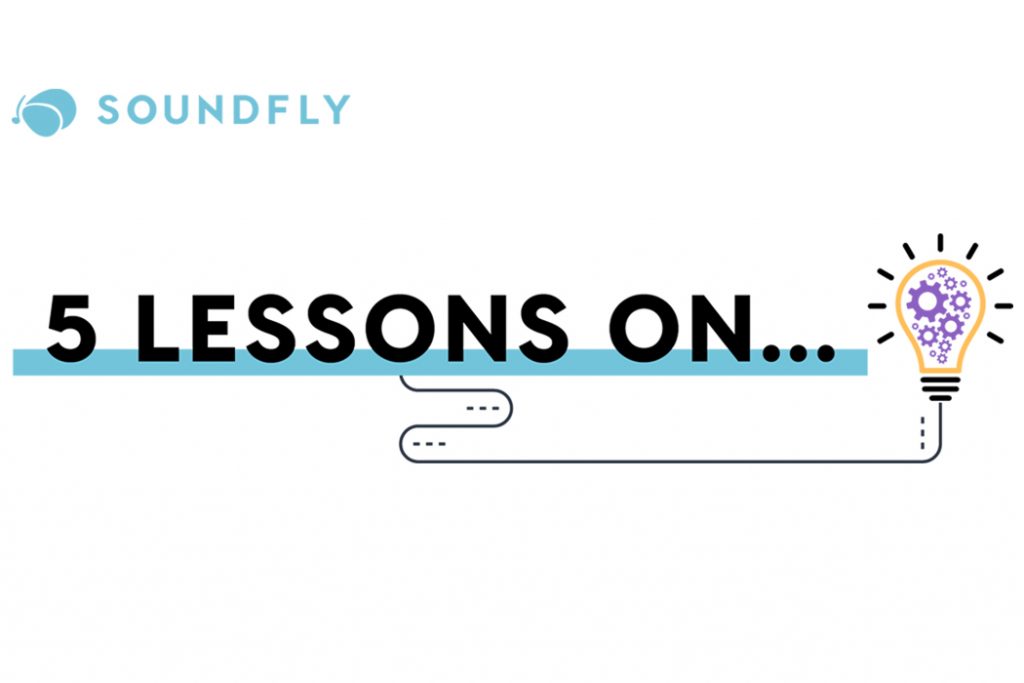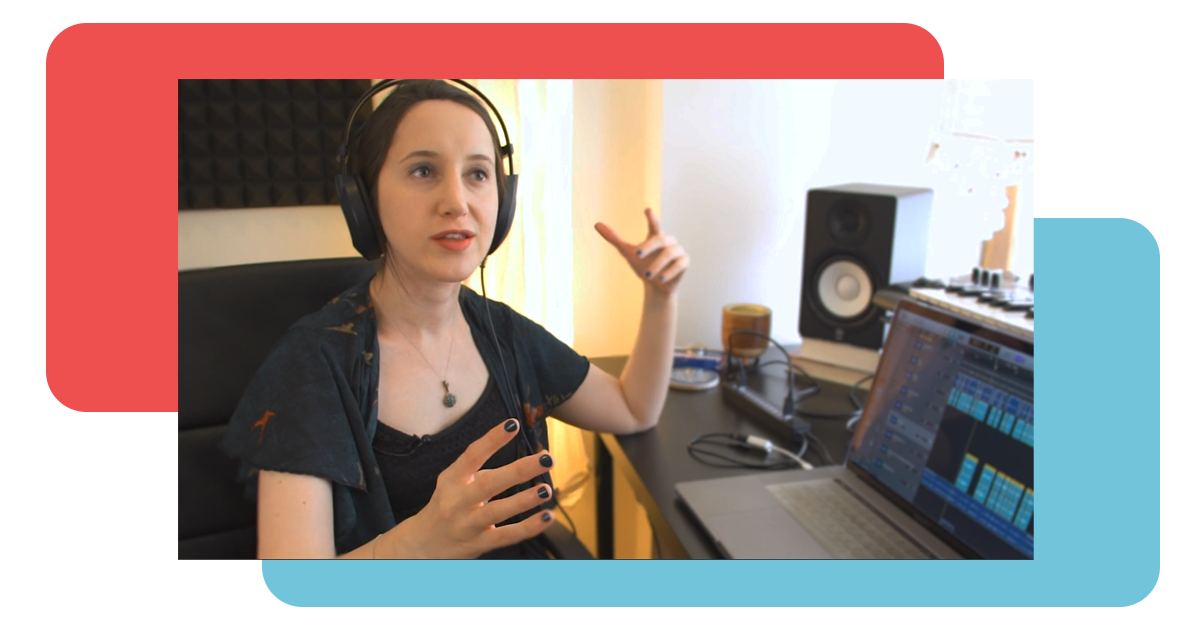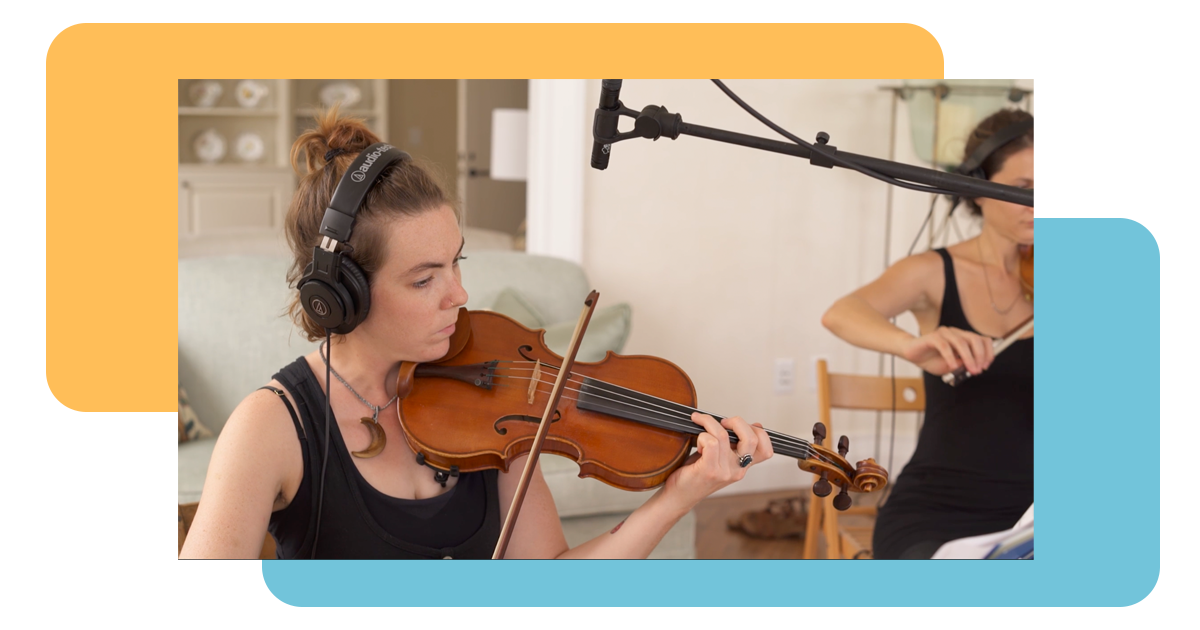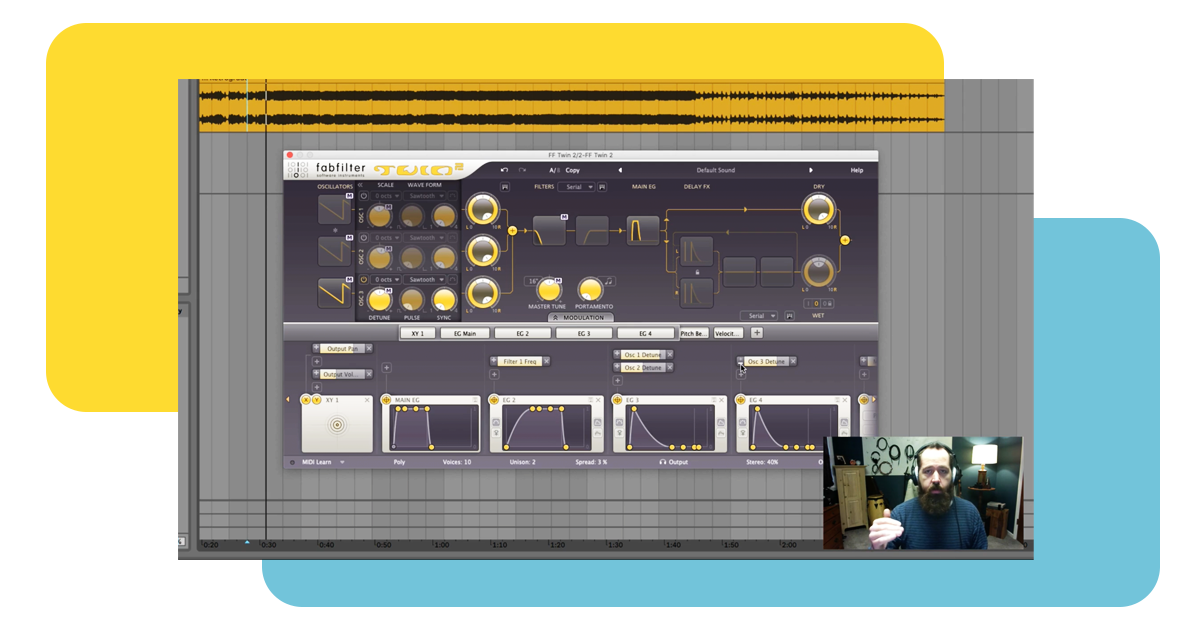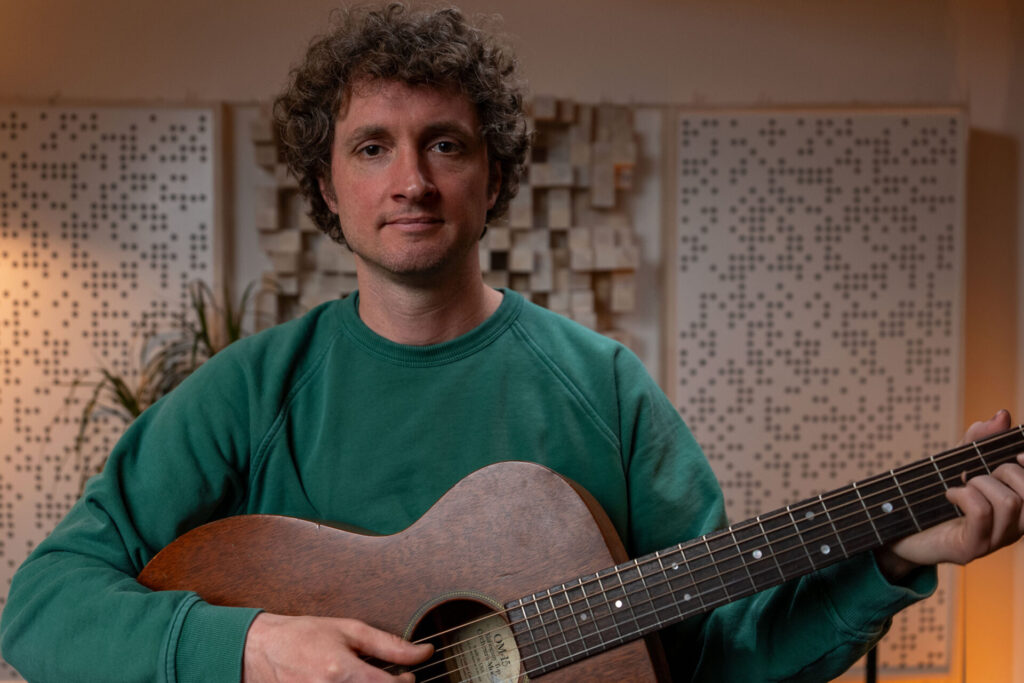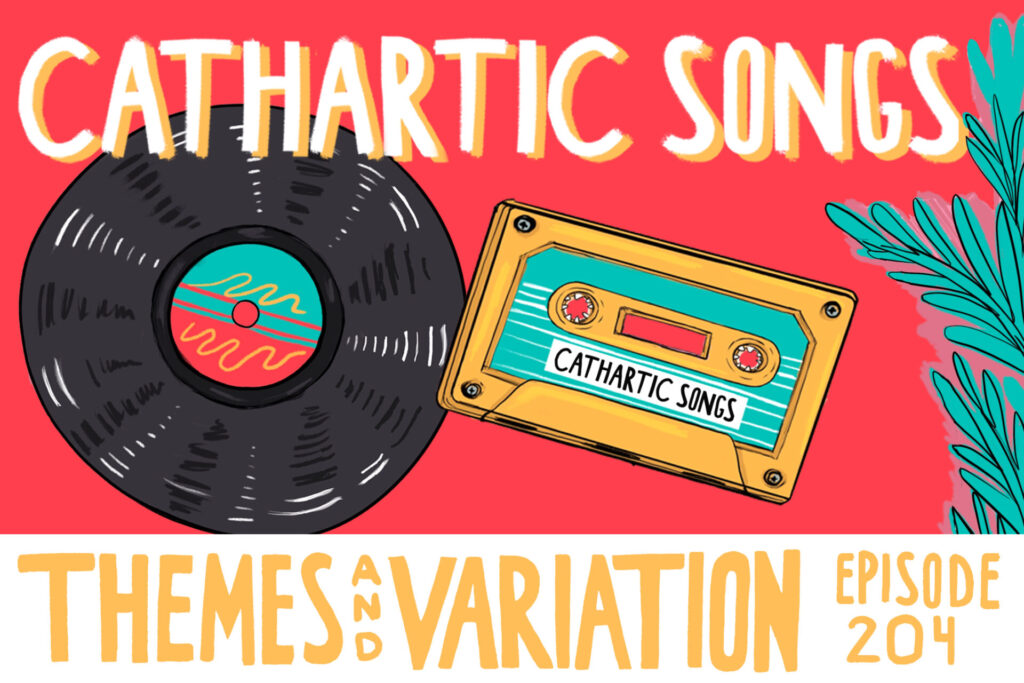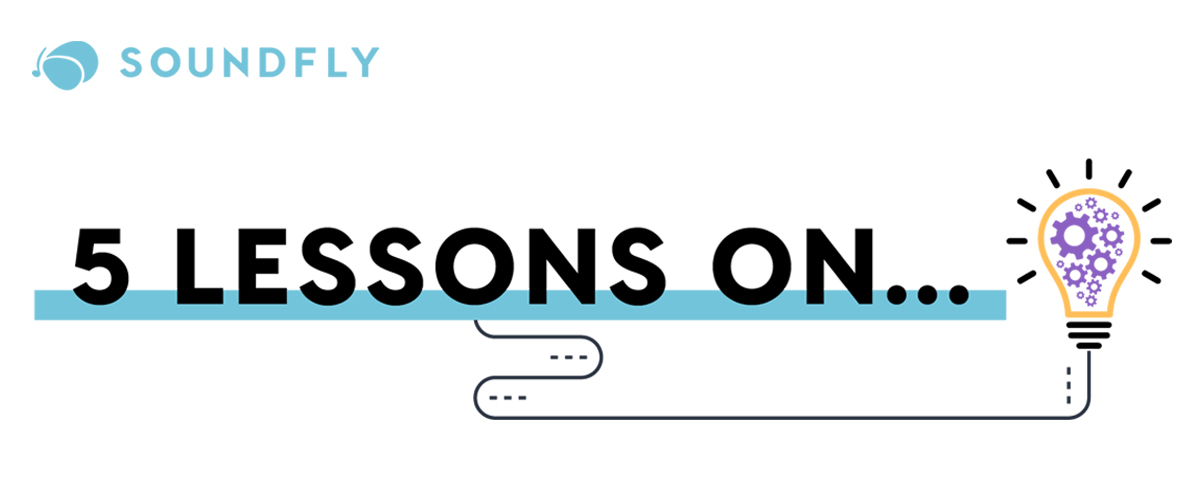
Originality
Soundfly’s new, themed monthly newsletter entitled “5 Lessons On…” is now on Flypaper.
Each month, we gather a digest of five Soundfly course lessons that respond to a shared theme and approach that area of discussion from different, unique angles. We hope that these lessons help anchor your music learning for the week, inspire you to explore new directions, or simply provide some entertaining content to enjoy over the weekend! *Note: You’ll need to be a Soundfly subscriber to access the lessons.
After tackling the art of songcraft in the first edition of this newsletter, we’re setting our sights on something more personal: Originality.
How can an online course teach you to be more original? Well, it can’t, per se, but in these lessons we’ll look at different creative approaches to composing, producing, and songwriting, that stem from the simple act of “making a choice.” It’s always your choice to lean into doing something differently, go ahead.
Here are our favorite 5 Lessons On… Achieving Originality. Enjoy!
MODERN POP VOCAL PRODUCTION
Repurposing Tuners in Action
Most singers or producers will use Melodyne and AutoTune as a corrective measure to bring a vocal track back in tune tonally. But how might you use tuning software as a compositional tool?
Now that’s thinking originally! In this video, vocalist and producer, SIRMA, takes us through the making of her single, “24 Hours,” in which the vocal harmonies she had recorded in duplicate simply weren’t creating any excitement.
To rethink her background harmonies, she took to Melodyne and started writing in different intervals and octaves to “rehearse” how they’d sound in the song. Once she finds something that works, she can decide whether to re-record acoustically in the booth, or keep the retuned digital version.
To let go of the control we have over our melodies might not sound like a means to originality at first, but then again, it may also lead to note combinations nobody would ever think to pursue!
Check Out This Full Lesson on Soundfly
ORCHESTRATION FOR STRINGS
On Chordal Voice Leading
The Orchestration for Strings course is mostly a primer on the concepts and strategies that drive any arrangement or composition for the string section. Composer Ian Davis covers the basics, and exemplifies by-the-book best practices for utilizing each instrument in a coherent manner.
But in this lesson, Ian examines the concept of chordal writing — which feels pretty straightforward (“just write out the chords, duh!”) — from such an eye-opening variety of angles that it’ll make you question everything, ever.
With a single melodic voice leading, you can have your chordal accompaniment move in parallel, contrary, oblique, or chromatic directions underneath. You can bring the chordal intervals closer together or father apart for more dense or open sounding effects, and play with combinations of all these methods. It just goes to show that within a small framework, there’s no end to the amount of possibilities for creating original sounding harmony.
Check Out This Full Lesson on Soundfly
KIEFER: KEYS, CHORDS, & BEATS
Sounding More Like Yourself
In one of the early lessons of his course, pianist and producer, Kiefer, tells us with some confidence: “At the highest level, the best musicians are those that sound the most like themselves.”
To some that might sound pretty obvious, but it’s an important distinction that — in a way — every musician needs to acknowledge at some point in their career and growth path. You need to stop trying to sound like Jimmy Page or Billie Eilish or J Dilla.
What is it that makes you, and your music, unique? How can you better serve that uniqueness and build on it, or around it?
As Kiefer moves through the lessons in his course, we learn more about his personal approaches to making and thinking about music. We learn what makes him unique and where he finds true beauty. The important takeaway of it all, is that in the end, you should leave his course having done a lot of that same thinking, asking a lot of those same questions, for yourself.
Check Out This Full Lesson on Soundfly
SONGWRITING FOR PRODUCERS
Lora-Faye Åshuvud’s “Incorrect Music”
If you’ve been in the Soundfly orbit for a while, you’ve no doubt heard us talking about the concept of “Incorrect Music” before. This concept was brought into existence by singer and multi-instrumentalist, Lora-Faye Åshuvud, of the band Arthur Moon.
Making incorrect music means rethinking what may at first sound wrong, to turn it into something you can whole-heartedly stand behind. In Lora-Faye’s case, this is epitomized by an out-of-tune, off-rhythm banjo sample, which despite its faults, holds an entire song together as a fulcrum. In her own words, she describes this mindset as: “accentuating and gaining control over wrongness.”
Whether through experimenting with song form, sample flips, arranging and incorporating strange instruments and sounds, or anything else, the idea is to not shy away from doing things the “wrong” way in order to create something unexpectedly beautiful.
Check Out This Full Lesson on Soundfly
ADVANCED SYNTHS & PATCH DESIGN FOR PRODUCERS
Swarming Saws in “Retrograde”
James Blake’s hit song, “Retrograde,” was an instant classic due to both the richness and depth of Blake’s soulful crooning, as well as his wildly original approach to sound design to incorporate detuned oscillators that eventually fall in sync with each other.
That’s one way to put it — another way would be that this song is just f*^%ing gorgeous. But how in the heck did he build that sound in the first place?
That’s what our resident synthesist and patch guru John Hull wanted to find out, too. In this lesson, John breaks down how Blake achieved the sound of three detuned oscillators swarming into a chord at different rates, using an envelope filter and modulators. Along the way, there are infinite points of departure for creating strange, unique synths to add to your song.
Check Out This Full Lesson on Soundfly
Improve all aspects of your music with Soundfly.
Continue learning with hundreds of lessons on songwriting, composing, home recording, electronic production, beat making, and much more. Explore Soundfly’s full array of exciting online music courses here.
